Stevia
The history of stevia in the world
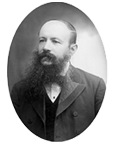 It took more than a hundred years since then, as a scientist and naturalist, famous botanist Italian-Swiss origin Antonio Bertone during an expedition to Paraguay opened for themselves and for the world sweet plant, which later became known as Stevia Rebaudiana Bertoni.
It took more than a hundred years since then, as a scientist and naturalist, famous botanist Italian-Swiss origin Antonio Bertone during an expedition to Paraguay opened for themselves and for the world sweet plant, which later became known as Stevia Rebaudiana Bertoni.
Before the Europeans found sweet grass, Stevia has been used for thousands of years with the Indians in present-day Paraguay and Brazil as a medicinal plant. Today, scientists estimate that there are over 80 species of Stevia., Which grow wild in North America. There are about two hundred additional types of Stevia, which grows exclusively in South America. But one only Stevia Rebaudiana two other now extinct species have proved to be the natural sweetness that is their hallmark.
The history of stevia in the world
Stevia refreshment

People's experience with stevia testifies to its ability to restore a person strength after a nervous and physical exhaustion. Due to synergism and potentiation of the components contained in the leaves of stevia, its use eliminates the fatigue and improves dynamic performance muscle (D. Kinghorn, 1987).
All this makes the stevia indispensable product for athletes and people engaged in heavy physical or strenuous mental work. Stevia slows the aging process.
Stevia refreshment
Make your skin healthy and beautiful stevia helps
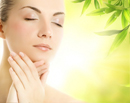 The aqueous extract of stevia is an excellent cosmetic for skin care, inhibits the growth of bacteria that cause inflammation of the sebaceous glands and the formation of acne. Masks from the aqueous infusion of stevia makes the skin soft, supple, eliminate irritation, prevent wrinkles.
The aqueous extract of stevia is an excellent cosmetic for skin care, inhibits the growth of bacteria that cause inflammation of the sebaceous glands and the formation of acne. Masks from the aqueous infusion of stevia makes the skin soft, supple, eliminate irritation, prevent wrinkles.
Water extract of Stevia - an extremely useful tool for regular skin care. Daily mask with an extract makes the skin soft and supple, wrinkles are removed and skin inflammation. Apply a water extract of stevia in the morning to the face, let dry, then rinse. In the evening you can soak a napkin tea powder stevia leaf, lay it on your face and hold for 20-30 minutes. Stevia improve intracellular metabolism in the epidermis, a positive effect on the circulatory and lymphatic systems, optimizing the pH of the tissues and blood. This prevents the formation of wrinkles and rejuvenates.
Make your skin healthy and beautiful stevia helps
Positive effect on the digestive organs Stevia
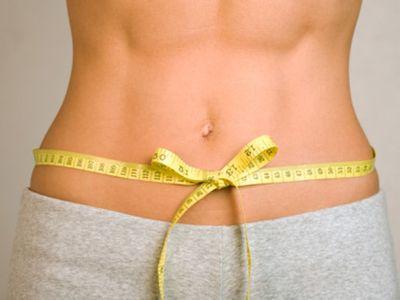 The positive effect of stevia organs of the digestive system, in particular on funktsiiyu pancreas and liver (Kinghorn F., Soejarto D., 1991). In folk medicine tea from Brazil used stevia leaves with heartburn and flatulence strengthened.
The positive effect of stevia organs of the digestive system, in particular on funktsiiyu pancreas and liver (Kinghorn F., Soejarto D., 1991). In folk medicine tea from Brazil used stevia leaves with heartburn and flatulence strengthened.
Ability to use stevioside to treat diarrhea based on the bactericidal and antiviral properties of stevia extract. Furthermore, it was found that stevioside inhibits intestinal smooth muscle, the stimulation of which leads to diarrhea associated with motility (Shiozaki et al., 2006). At a concentration of 1 mM it is inhibited by 40% contraction of the isolated ileum when exposed to calcium chloride.
Positive effect on the digestive organs Stevia
Powerful anti-inflammatory and bactericidal action herb stevia
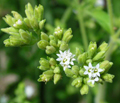 The proofs that stevioside has anti-inflammatory action of both invivo, as well as in vitro. It has been shown that the development of local skin inflammation inhibited steviol glycosides, including stevioside (Yasukawa et al., 2002).
The proofs that stevioside has anti-inflammatory action of both invivo, as well as in vitro. It has been shown that the development of local skin inflammation inhibited steviol glycosides, including stevioside (Yasukawa et al., 2002).
Stevioside and steviol showed anti-inflammatory effect on epithelial cells of the colon. Under physiological conditions colonocytes regulation functioning, not only forming a barrier, through which the transport of fluids and electrolytes, but also as a natural immune barrier to microbial pathogens (Sartor, 2008).
Colonocytes role in inflammatory reactions is primarily based on the specific interaction of receptors with antigens mikrooorganizmov-pathogens. This interaction leads to the subsequent induction of the synthesis of pro-inflammatory cytokines.
Powerful anti-inflammatory and bactericidal action herb stevia
The technology of growing stevia in the ground
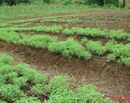 One of the most promising sources of natural low-calorie sweets are introduced from South America perennial grassy plant Stevia rebaudiana Bertoni, in leaves which contains at least eight different dyterpenovyh glycosides with exceptionally sweet taste.
One of the most promising sources of natural low-calorie sweets are introduced from South America perennial grassy plant Stevia rebaudiana Bertoni, in leaves which contains at least eight different dyterpenovyh glycosides with exceptionally sweet taste.
In our country work on the biological and agronomic features of this plant for its introduction started in 1986 and are held in different soil and climatic zones.
One of the main problems in the introduction of stevia in Ukraine are growing it in the field on a one-year cycle and explore important issues such as the timing of planting, the area of the power plant predecessors stevia, soil and their cultivation, fertilizer, care of plants, harvesting and other .
The technology of growing stevia in the ground
Stevia in the treatment of diabetes
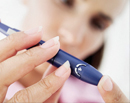 Global study on the hypoglycemic effect of Stevia
Global study on the hypoglycemic effect of Stevia
Recent decades have seen a sharp rise in the incidence of type 2 diabetes and obesity as a result of dietary habits and reduced physical activity. These metabolic syndrome have become a significant public health problem in industrialized and developing countries. For the treatment of mild forms of diabetes are frequently used medicinal plants and means of alternative medicine. In South America, it was used in this extract from S.rebaudiana (Kinghorn, Soejarto, 2002). In addition, given that the main component of the extract, stevioside is sweet, but non-nutritive substance, it becomes a good substitute for sugar bodnyh diabetes.
Stevia in the treatment of diabetes
Stevia herb. Honey stevia
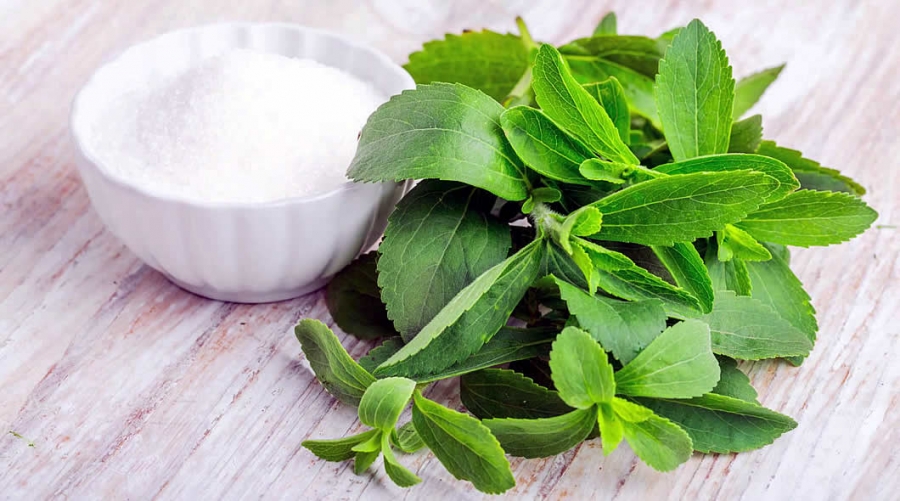 Stevia rebaudiana Bertoni (sweet umbrella leaf) is a unique South American perennial plant of the aster family. Stevia herb itself is 30 times as sweet as sugar, and diterpene glycosides (steviosides) in the herb composition exceed sweetness of ordinary sugar by a factor of 300 and are entirely calorie-free. That is why Stevia currently represents the only natural calorie-free sugar substitute. This unique plant contains various mineral compounds, vitamins, essential oils, amino acids, pectins etc. It comprises substances playing the role of construction materials for the production of hormones in human body.
Stevia rebaudiana Bertoni (sweet umbrella leaf) is a unique South American perennial plant of the aster family. Stevia herb itself is 30 times as sweet as sugar, and diterpene glycosides (steviosides) in the herb composition exceed sweetness of ordinary sugar by a factor of 300 and are entirely calorie-free. That is why Stevia currently represents the only natural calorie-free sugar substitute. This unique plant contains various mineral compounds, vitamins, essential oils, amino acids, pectins etc. It comprises substances playing the role of construction materials for the production of hormones in human body.
Stevia herb. Honey stevia
Stevia in Ukraine
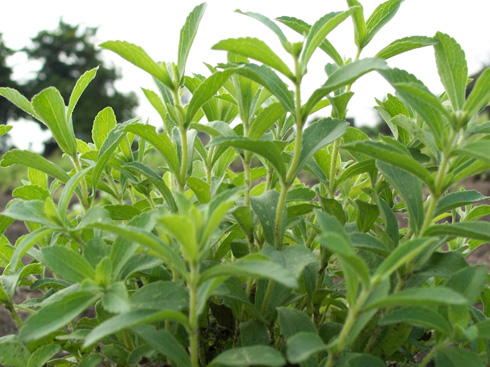 Stevia - a perennial plant that belongs to the department of higher plants - Kormobionta, type angiosperms - Angiospermae, class of flowering - Dicotyledoneae, Compositae order - Compositales, family Asteraceae - Asteraceae, genus - Stevia, type - rebaudiana - Stevia rebaudiana Bertoni.
Stevia - a perennial plant that belongs to the department of higher plants - Kormobionta, type angiosperms - Angiospermae, class of flowering - Dicotyledoneae, Compositae order - Compositales, family Asteraceae - Asteraceae, genus - Stevia, type - rebaudiana - Stevia rebaudiana Bertoni.
The family to which the stevia, a lot of numerical, has more than 20,000 species. This is a relatively young plant, which is in the phylogenetic bloom, which continued process of speciation.
Stevia - perehresnozapylna plant mainly entomofil. However, in the literature there is some evidence of obligate apomixis in stevia, as well as self-pollination.
Stevia plants differ greatly in form and habit bushes, stems and shoots. Depending on the length and number of lateral shoots angle
Stevia in Ukraine
Herb stevia sweeteners
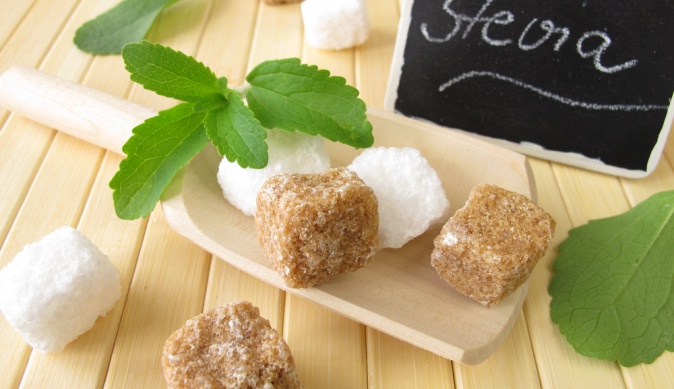 In 1952 it was established the chemical structure of the sweet components of stevia, stevioside. It has been established that it is dipertenovym glycoside consisting of three molecules of glucose and aglucone steviol (Wood et al., 1955 .; Wood and Fletcher, 1956).
In 1952 it was established the chemical structure of the sweet components of stevia, stevioside. It has been established that it is dipertenovym glycoside consisting of three molecules of glucose and aglucone steviol (Wood et al., 1955 .; Wood and Fletcher, 1956).
Furthermore stevioside in the leaves of stevia found other sweet glycosides - rebaudiosides (A, B, C, D and E), and steviolbioside duliobiozid with varying degrees of sweetness (50 to 450) to sucrose. Most of them sweet is rebaudioside A (degree of sweetness 350-450). In dry stevia leaves contains about 3% rebaudioside. Unlike stevioside it more soluble in water and its unpleasant aftertaste is less intense than the stevioside.
All of these isolated diterpenoidnyh glycosides chemical skeleton of the same - steviol, but they differ in carbohydrate residues at positions C13 and C19 (Shibata et al., 1995). Stevia sweeteners differ both in terms of sweetness and quantitative content in leaves. The main components of the leaves (in percentage of the dry weight) are: stevioside (5-10%), rebodiozid A (2-4%), rebodiozid C (1-2%) and dyulkozid A (0.4-0.7%) (Wood et al., 1955). The chemical structure of stevioside and related compounds, including steviol, rebodiozid A isosteviol and digidroizosteviol shown in the figure.
The sweetness of Stevia glycosides compared to sucrose as follows: for dyulkozida
